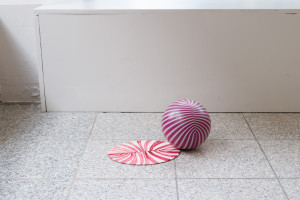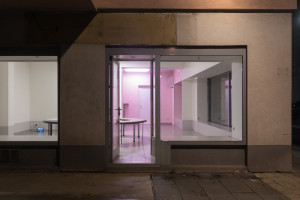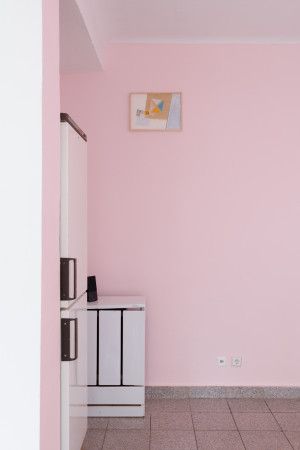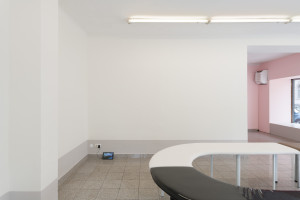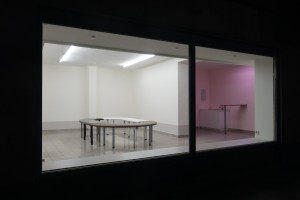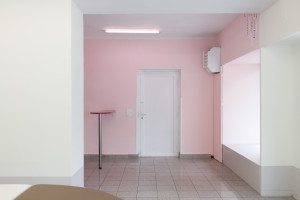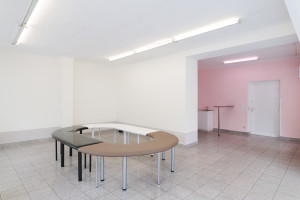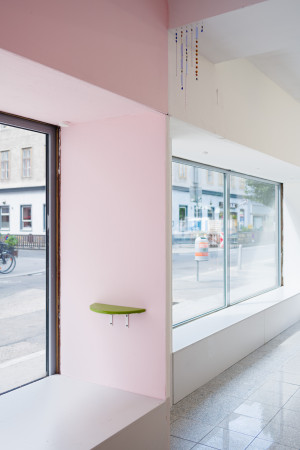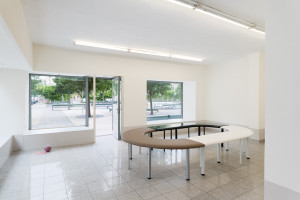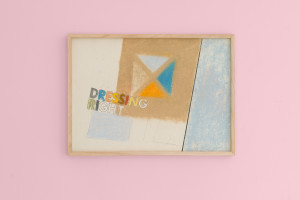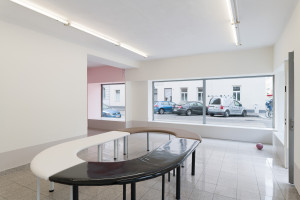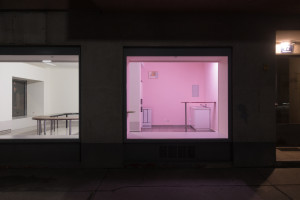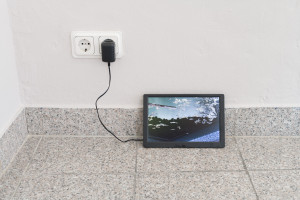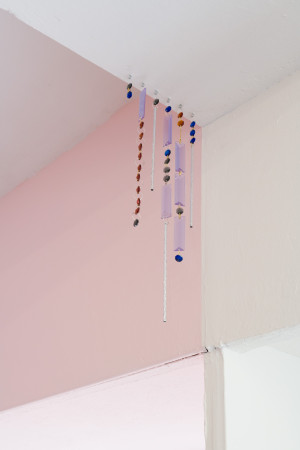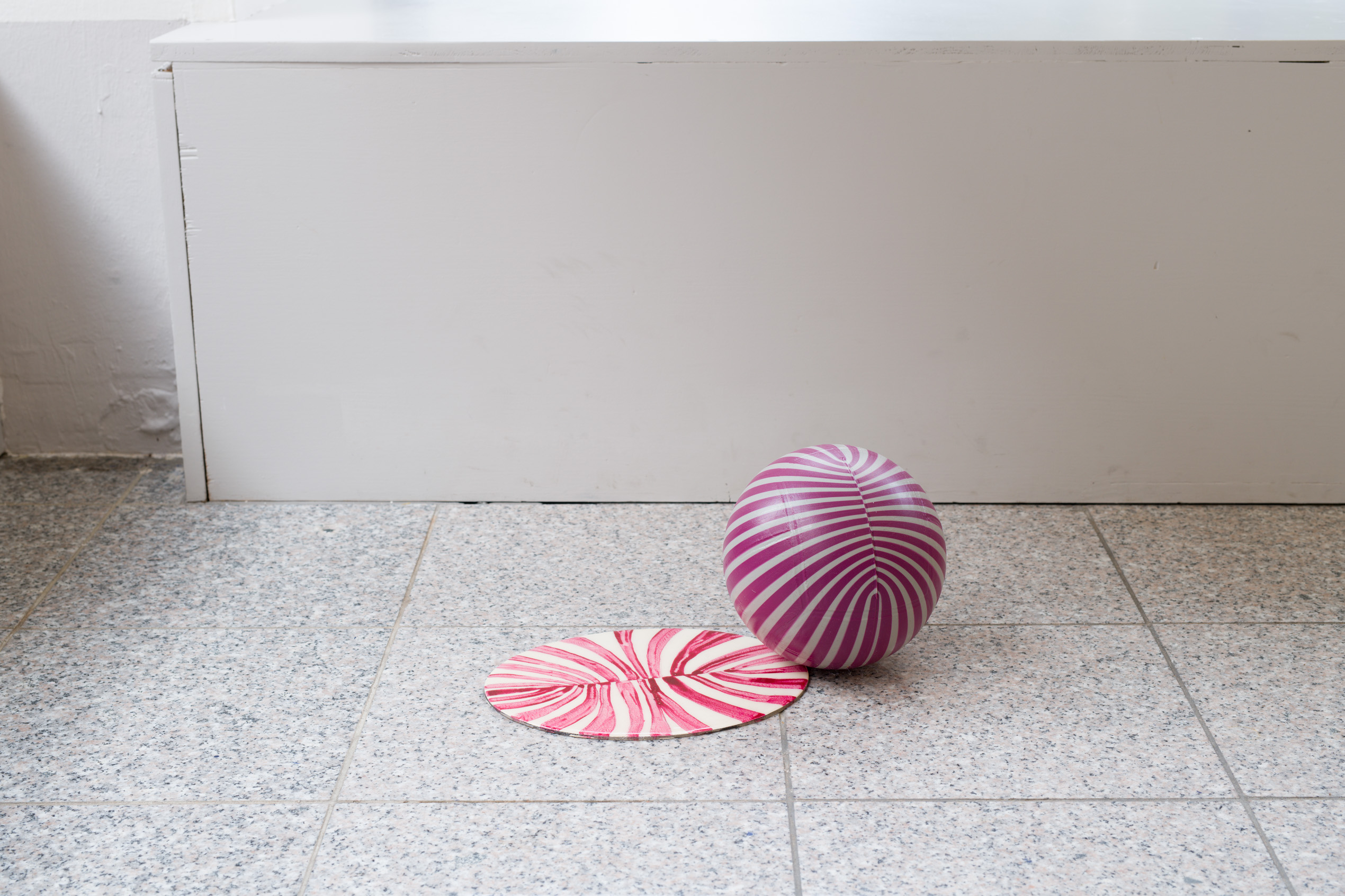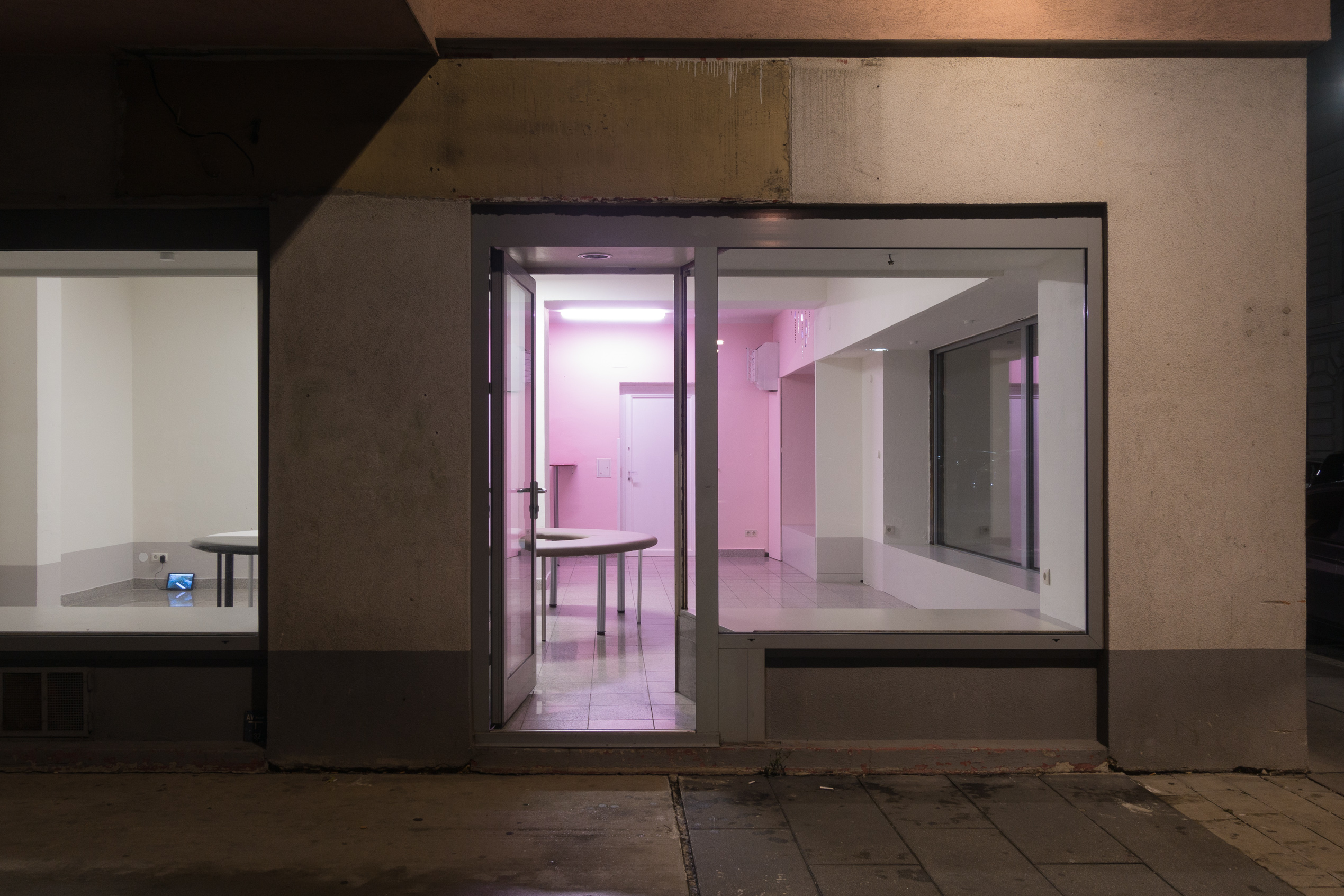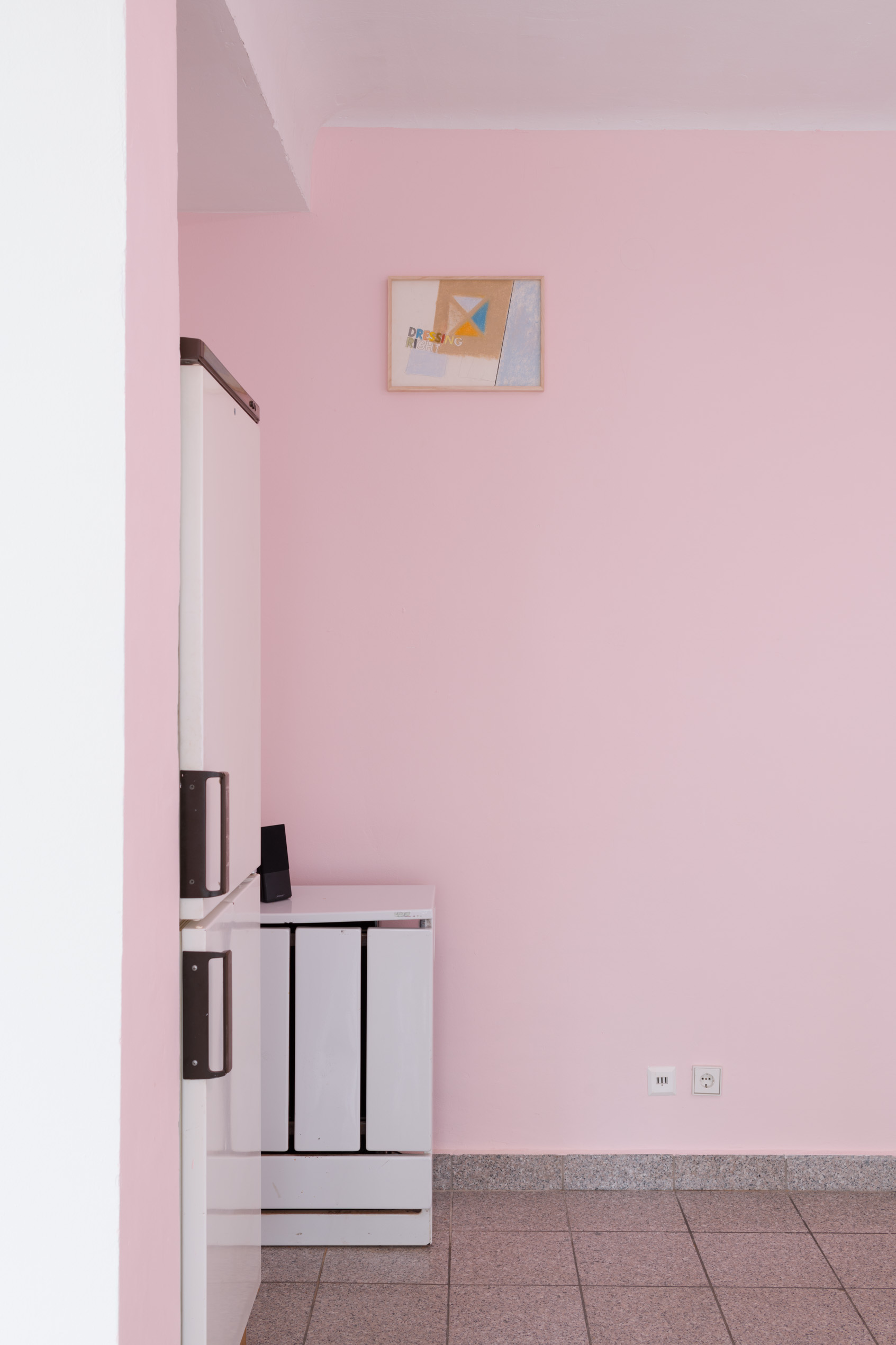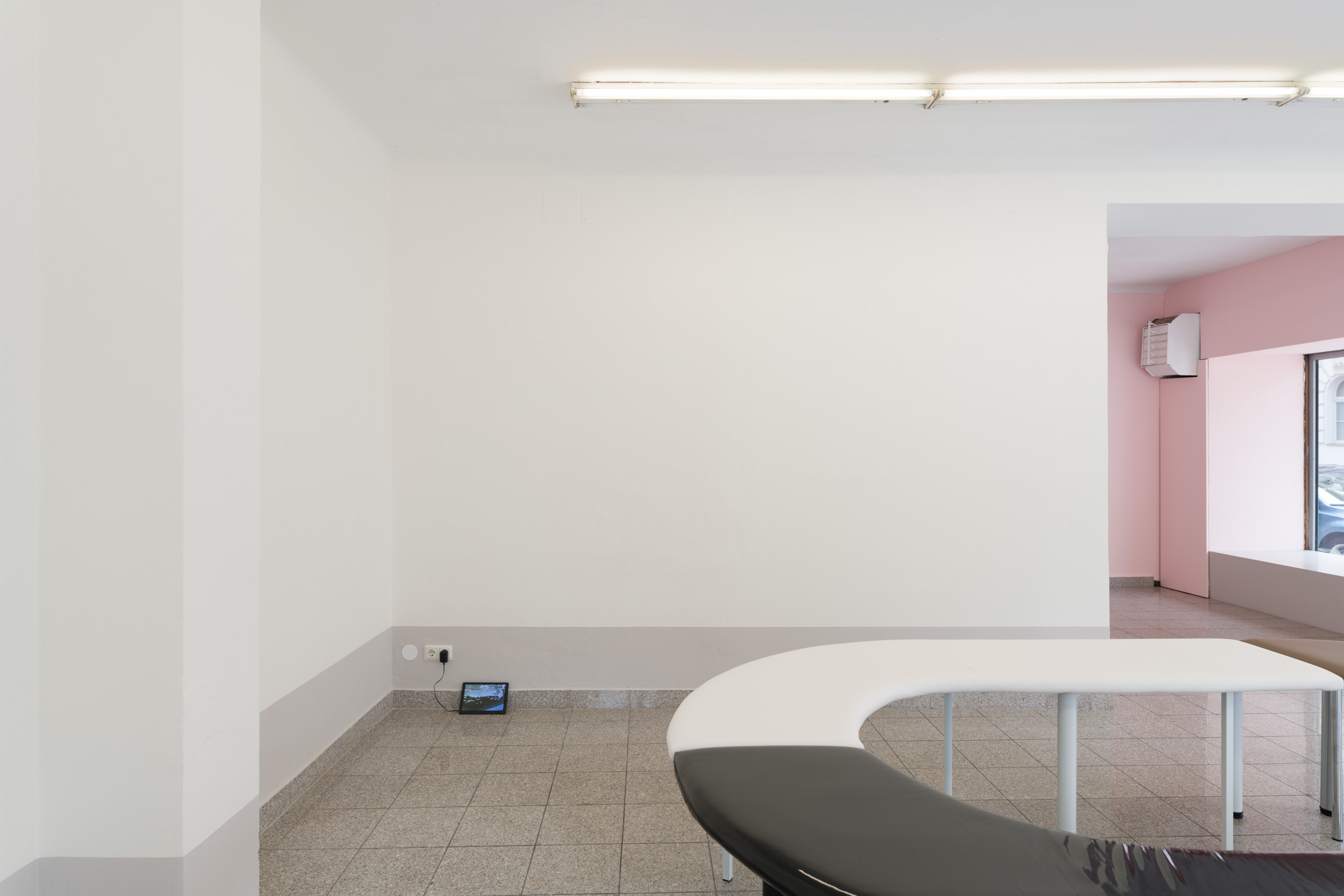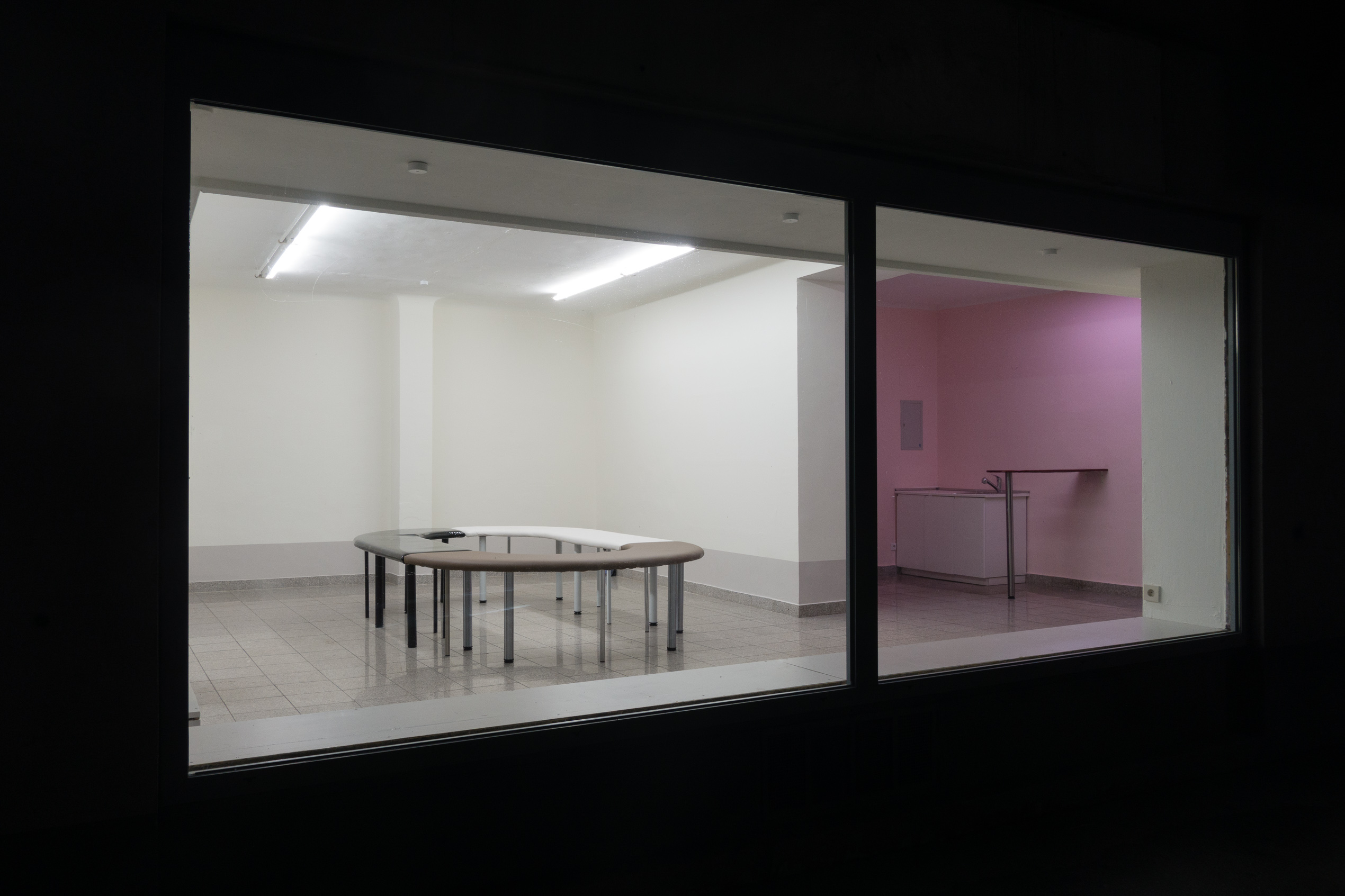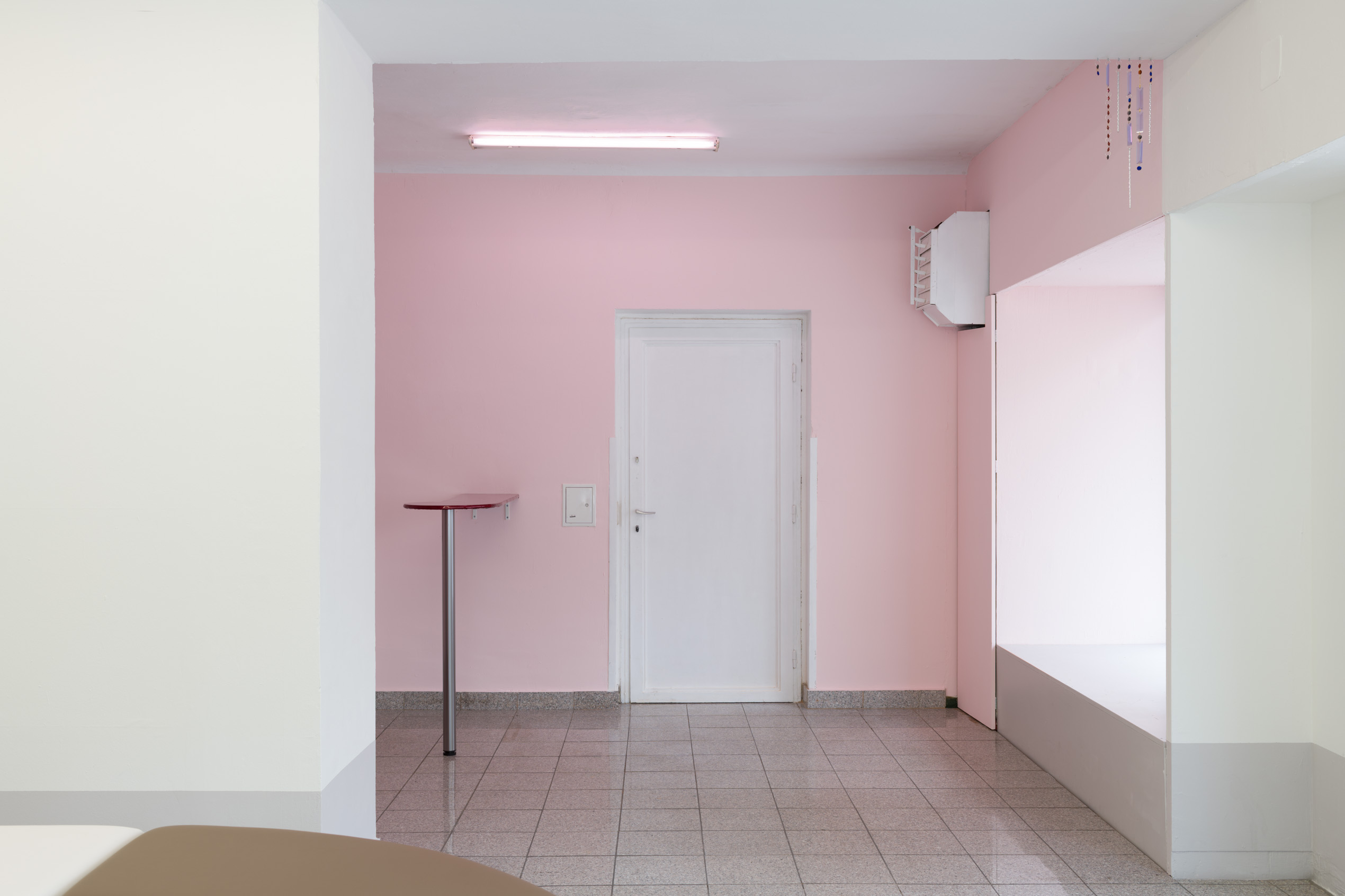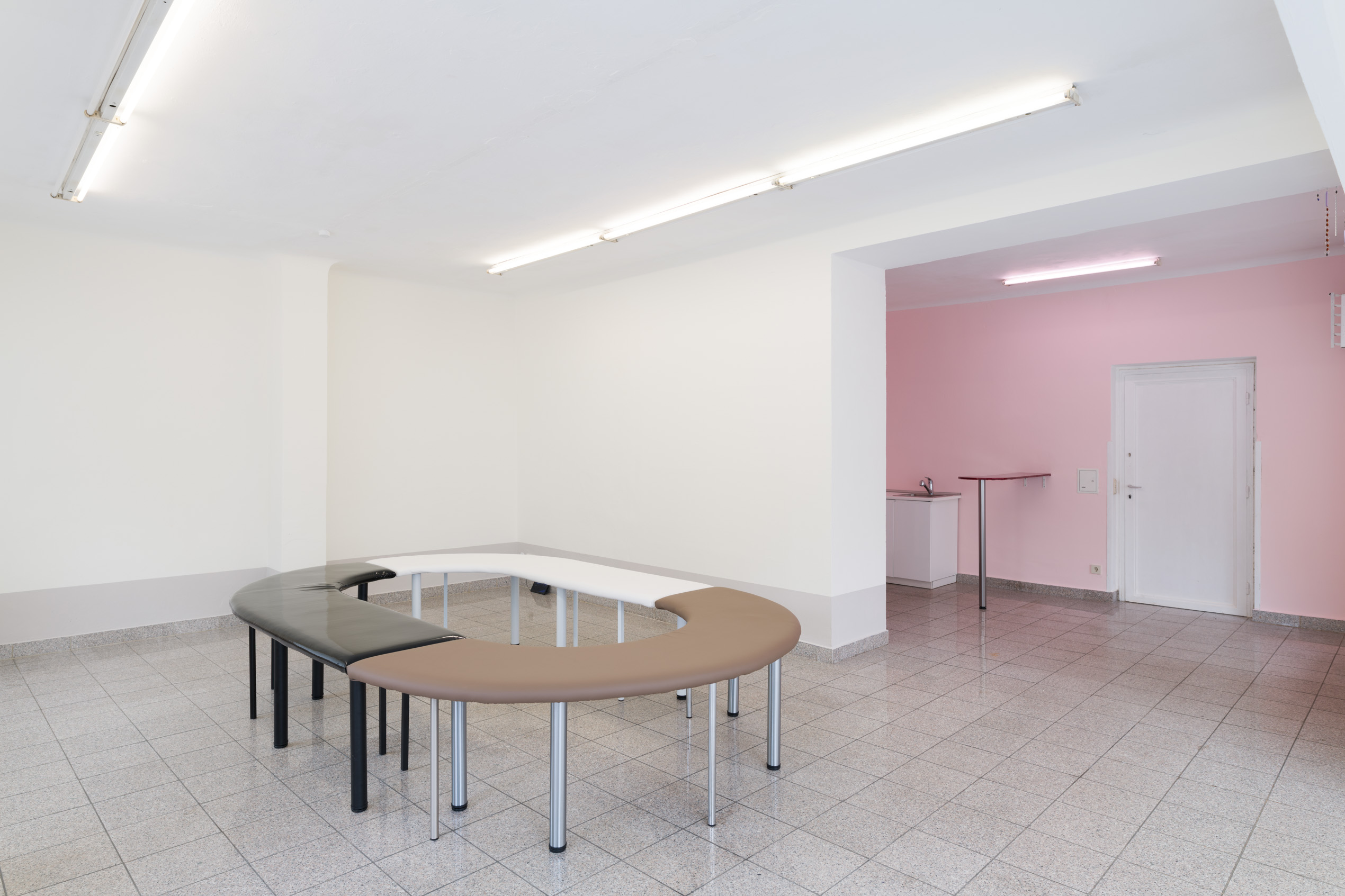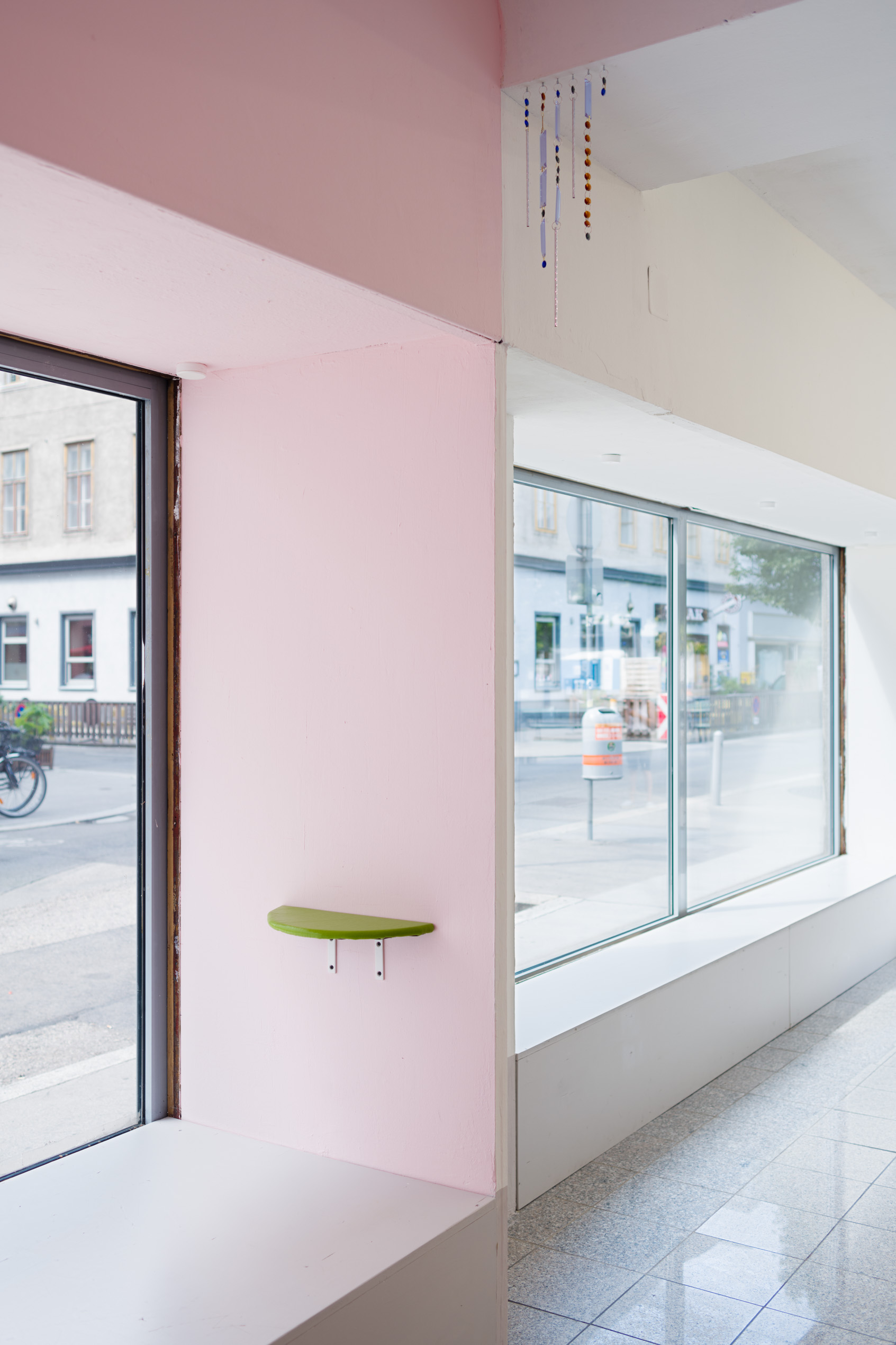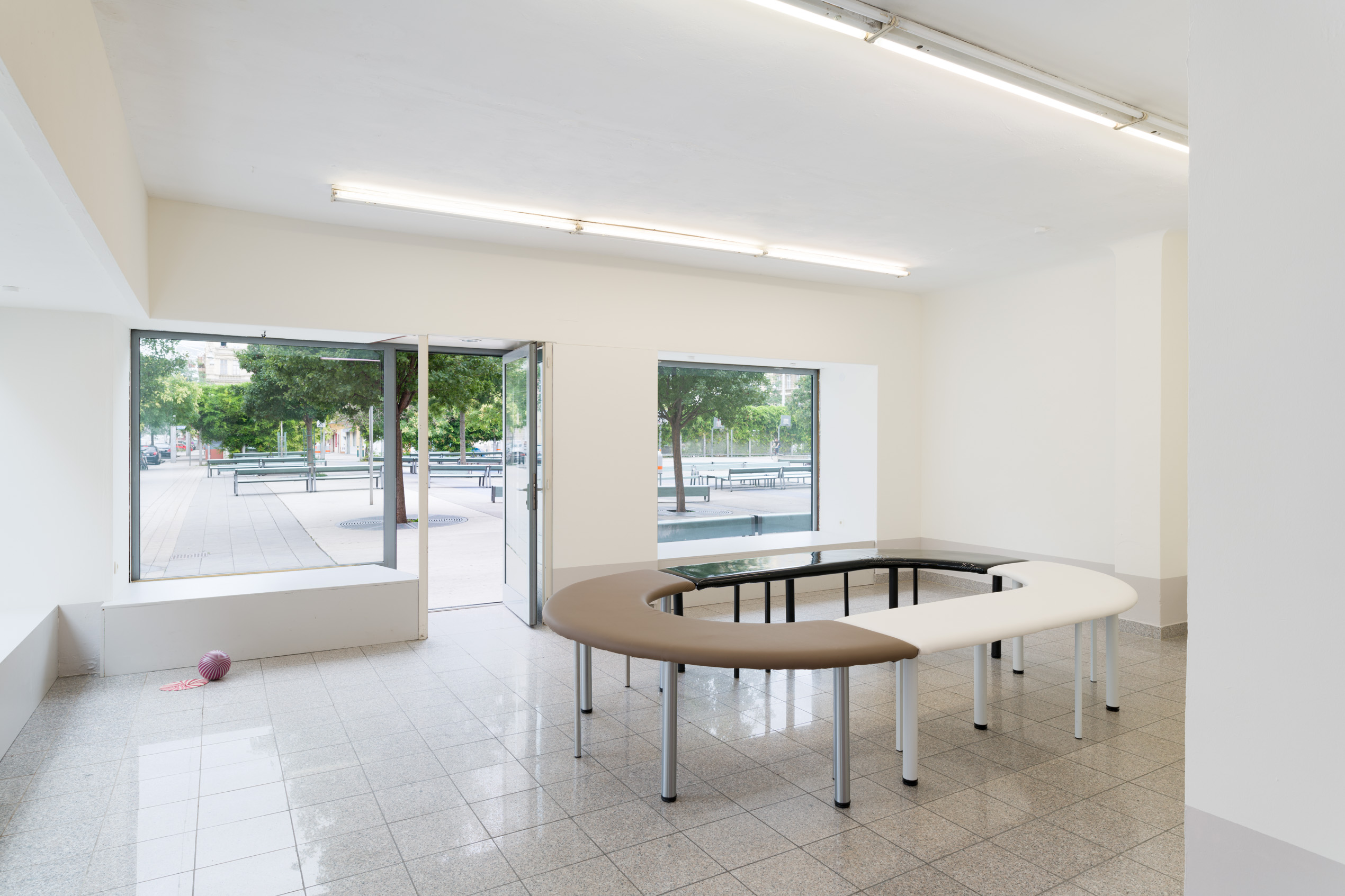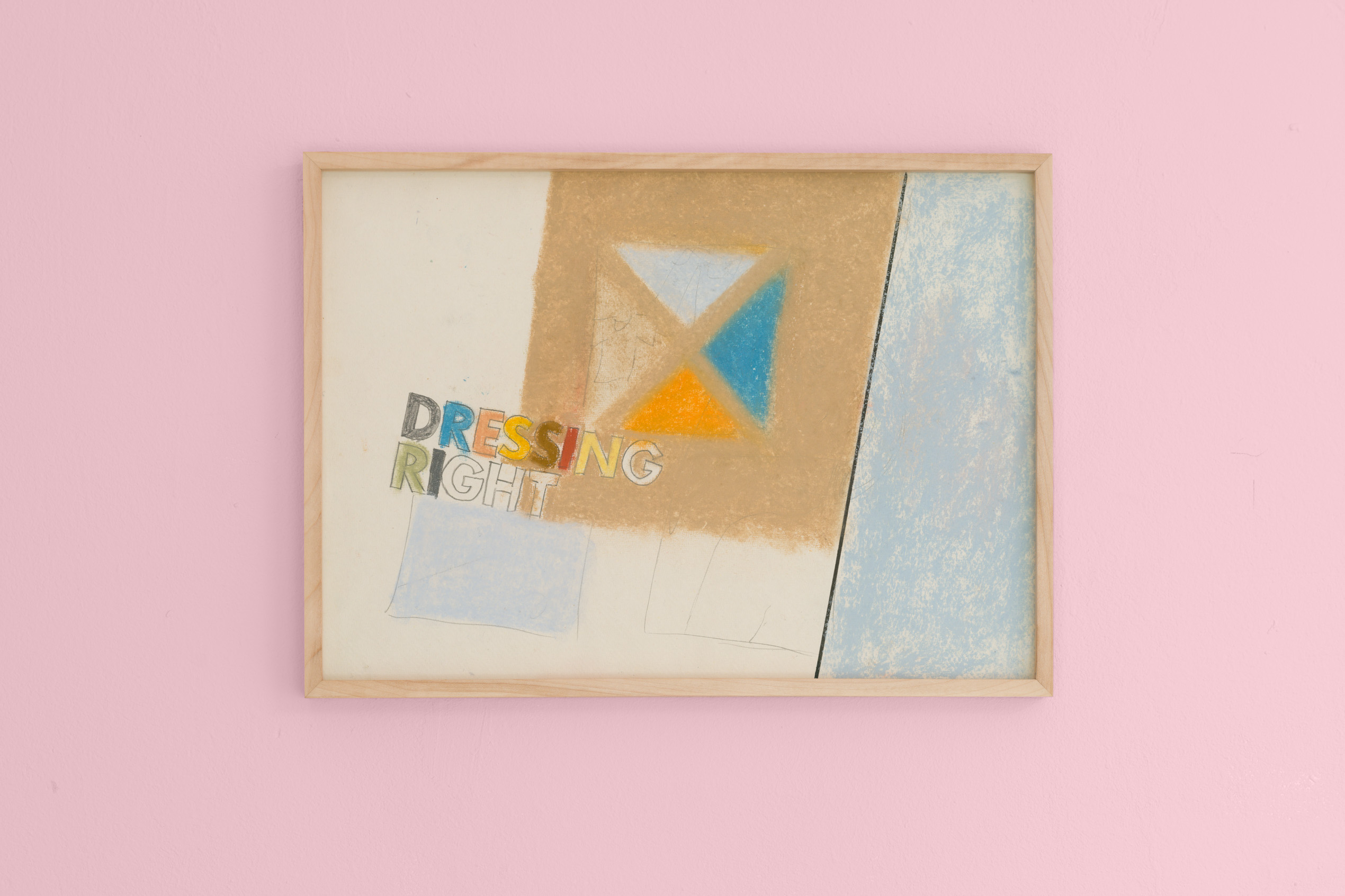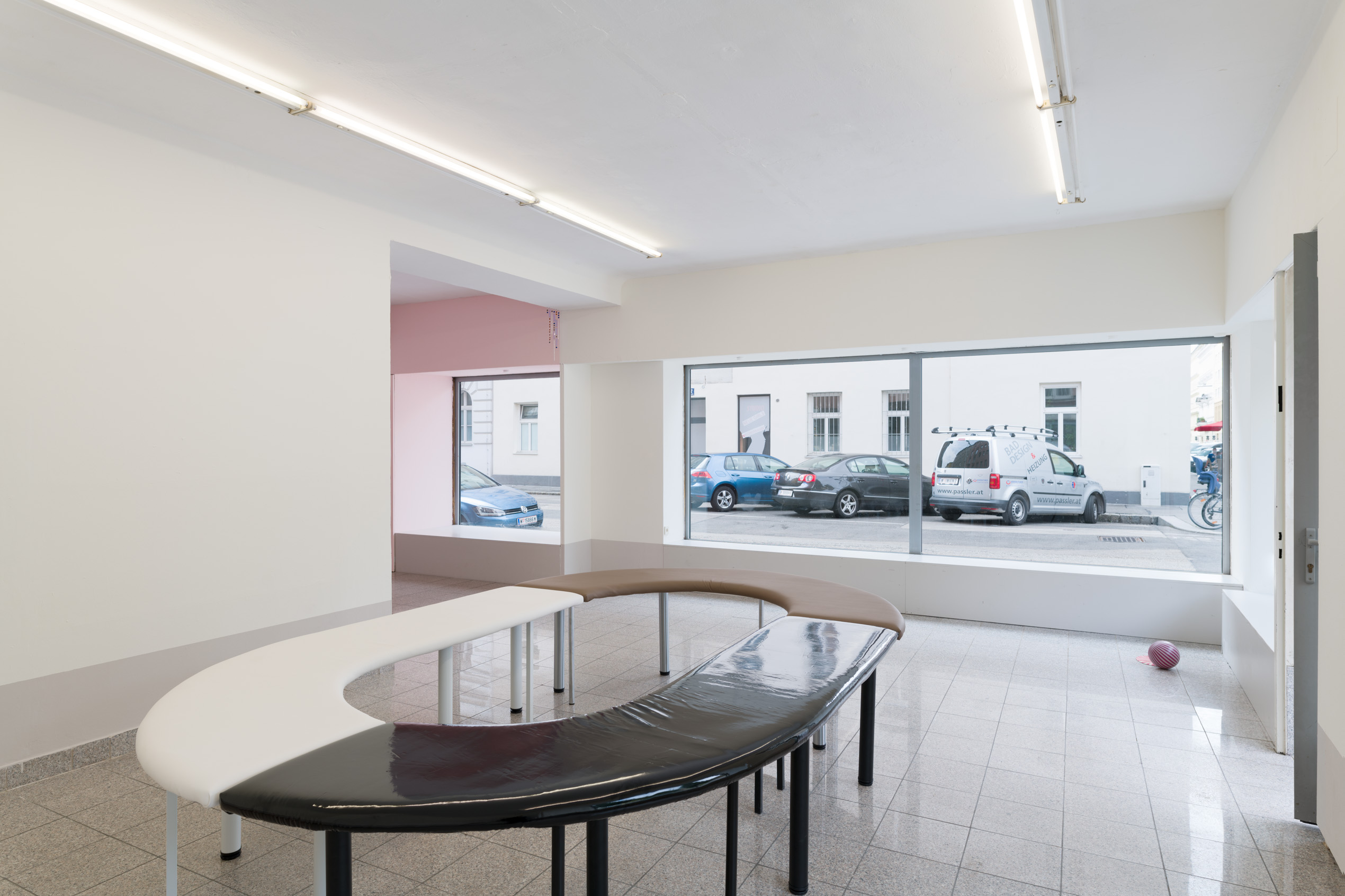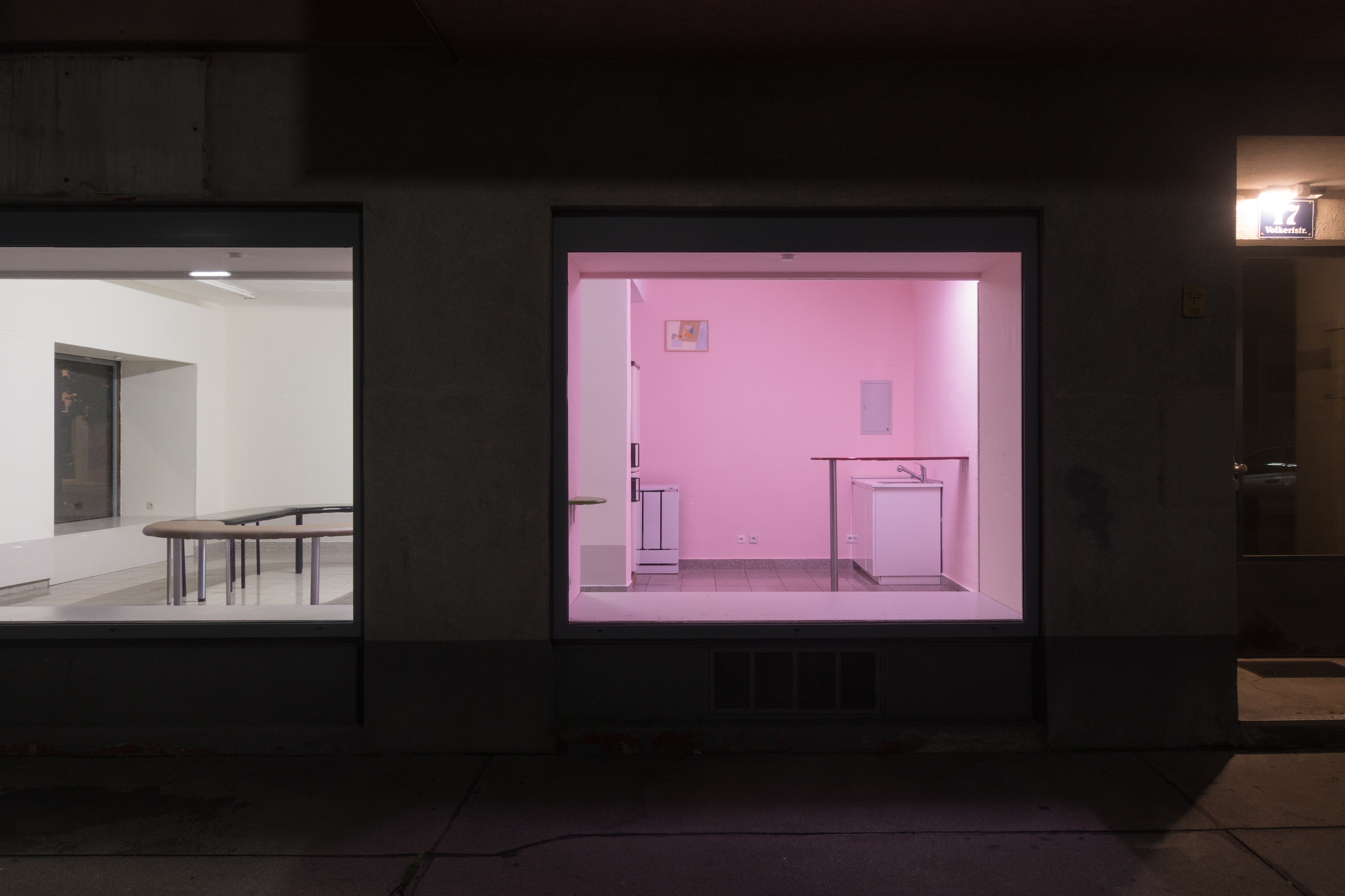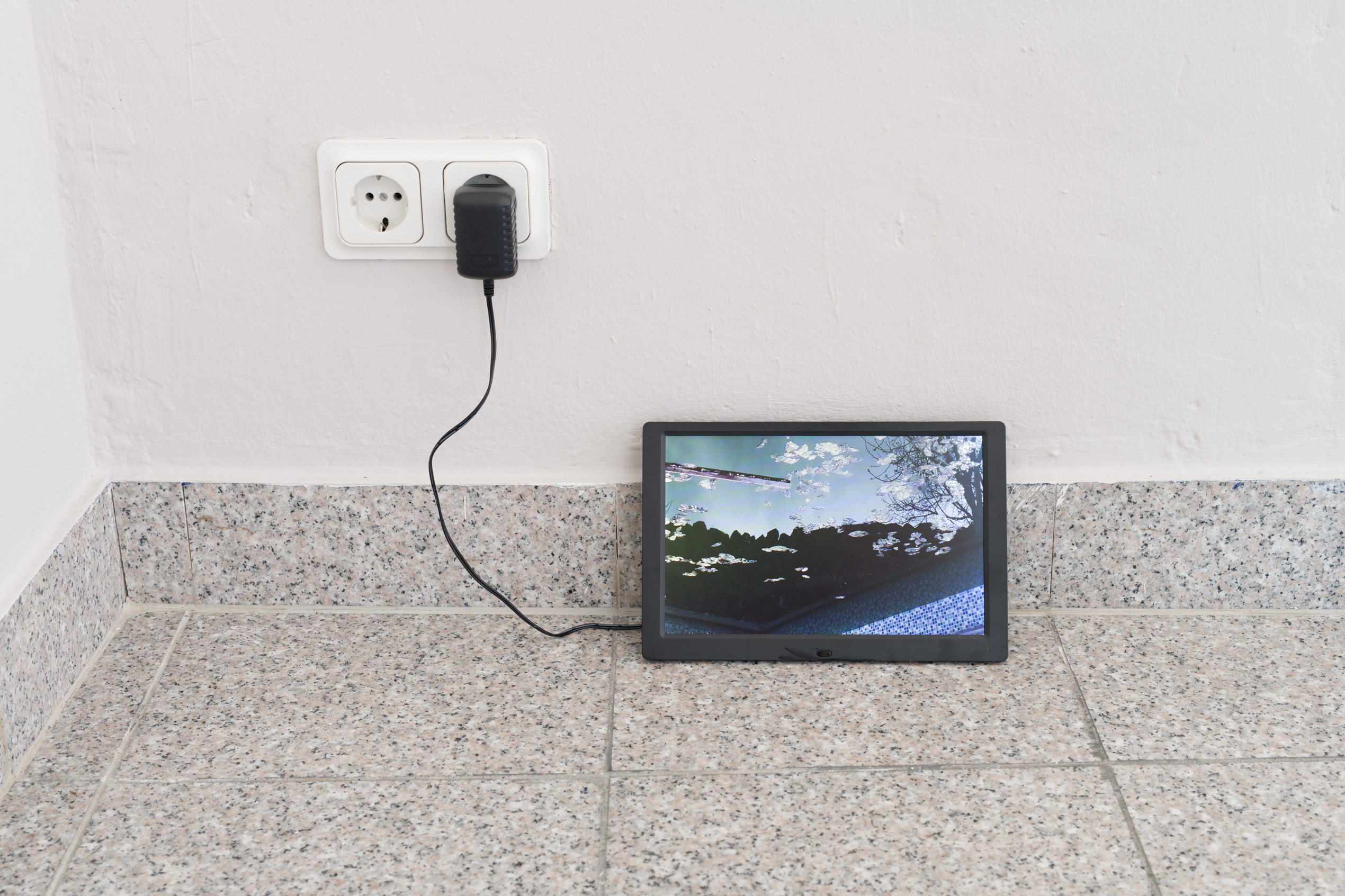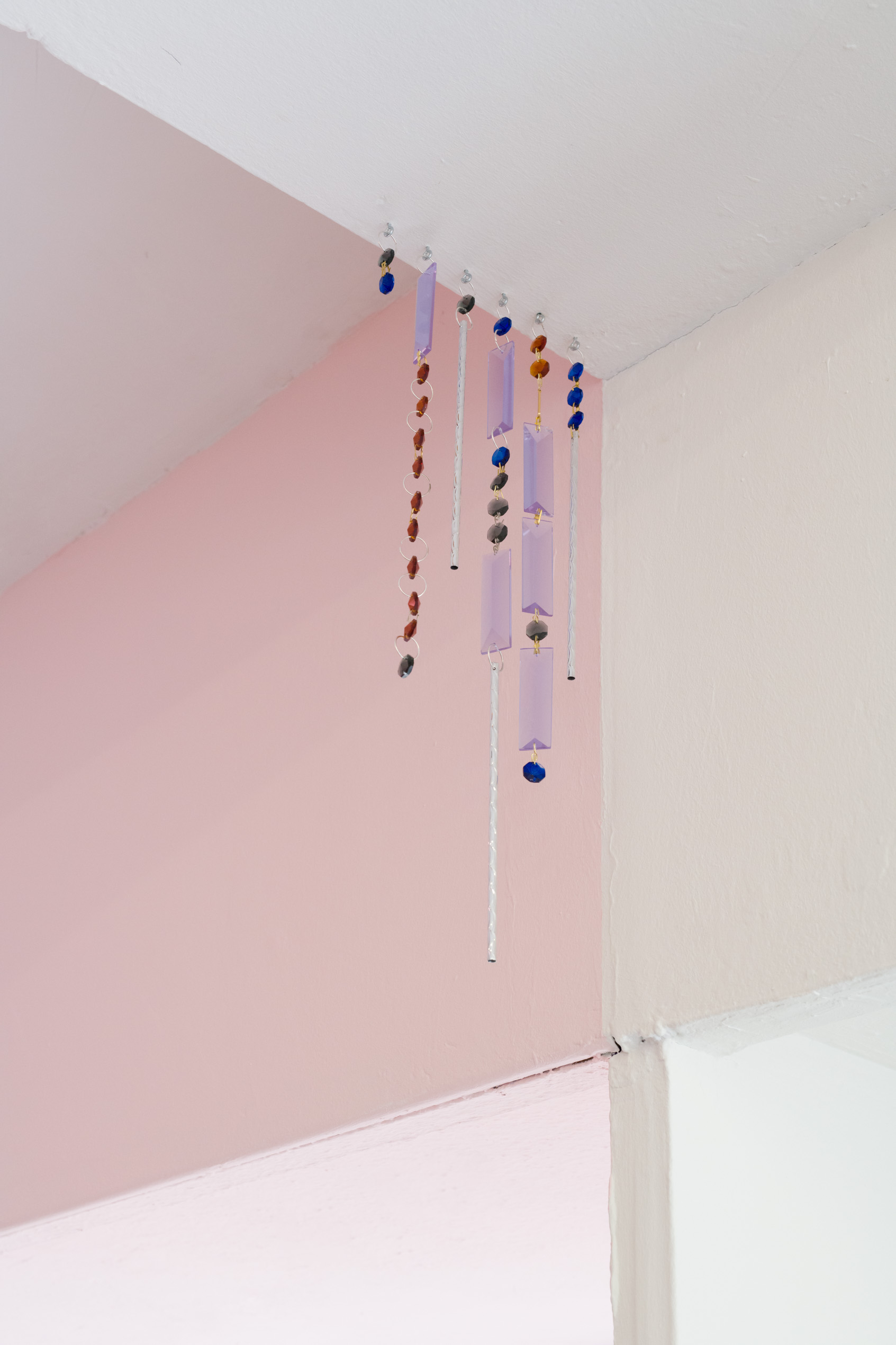Parastu Gharabaghi works at the intersection of sculpture, installation and video. Challenging and dissolving prevailing concepts of authorship and the role of the artist, her multi-layered practice often involves the participation of invited, sometimes mysterious, collaborators with whom she stages ambiguous dramaturgies of uncertain, confused identities. At Kevin Space, Gharabaghi investigates and blurs the identity of spaces defined by their assigned functions. In a new series of work and their site-specific mise-en-scène, opposed spaces or realms are being mirrored, while at the same time shifted and infiltrated by memory, fiction and glitches.
The exhibition open the door close the window borrows its title from a quote from an outdated English textbook and opens up multiple readings. In its core, it implies the existence of a mutually dependent interior and exterior, and the inbetween: spatial entities, separated yet connected and porous. An immediate reaction to the exhibition space’s location and surroundings, the painted walls mirror the building’s own, as well as the neighbouring house’s facade, consisting of a grey stripe on the lower part (a practical and often used décor on urban facades), a subtle off-white, and a pink color tone, not only responding to the upper part of the building but at the same time inverting the building’s protrusion into the back of the exhibition space. The color scheme suggests a space whose appearance mimics an exterior though clearly functions as an interior.
Turned into a peculiar oval seating arrangement, a configuration of furniture-like sculptures references the scattered benches right in front of Kevin Space’s shop windows on the market square. While, on Volkertmarkt, the benches are continuously adapted by the neighborhood’s inhabitants to the needs of their activities and social gatherings, Gharabaghi’s benches were conceived for interior use. Reminiscent of a medical treatment couch, the work’s height undecidedly oscillates between a table and a bench, its awkward shape inviting the visitors to interact and decide on how to use it: lying on it, or sitting on it? How to engage with the others? In a seemingly social, circular arrangement in which people sit inwards, and look at each other (though at the same time isolated by turning their back to the “outside”)? Or, turning their back to an assumed inner circle in a loose, perhaps lonely, but potentially open position by facing outwards? Perhaps not use it all, but rather look at it and perceive it as a sculpture?
The looped video work Abesard shows images of an unkempt, inaccessible outdoor swimming pool, emptied from its function and meaning as a social space; reflections of the outside flicker on its surface and – similar to a children's game ball from Iran and its distorted painted image placed on the gallery’s floor – offer glimpses into more associative spaces.
The realm of the social culminates in the back of the space, now transformed into a bar, allegedly the ultimate social space. Introduced by a small curtain-like hanging sculpture which marks another threshold in the space, the pink color of the walls not only echoes the building’s facade but could also remind of the calming effects of the Baker-Miller Pink, as used in psychiatric institutions or prison cells. In the bar area – conceived as a stage for the opening of the exhibition in which actual or imagined guests constitute the work — the social and the collective are further enhanced through the invitation to Fabian Leitgeb, whose drawing is integrated into the setting. The collaborative sound piece by Gharabaghi and artist Demian Kern, opens up an acoustic space in which different spheres — insinuated by distorted jazz music, musical conversations, readings of cocktail recipes, or the subtle sound of water in a swimming pool — all seem to overlap and mingle.
Parastu Gharabaghi (b. 1987 in Vienna) studied at the Academy of Fine Arts Vienna with Ashley Hans Scheirl and Julian Göthe, as well as at Slade School of Fine Arts, London. Her works have been presented at Gärtnergasse, Vienna, Alma Zevi, Venice, Egret Egress, Toronto, Agnes Maybach, Cologne, VBKÖ and Xhibit, Vienna.

